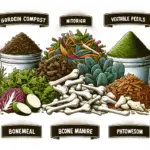Introduction to Succulents
Succulents have surged in popularity in recent years, becoming a favorite among plant enthusiasts and casual gardeners alike. Their unique ability to store water in their leaves, stems, and roots makes them ideal for a variety of environments, especially for those who may not have the greenest thumb. As more people seek out low-maintenance houseplants that add beauty and life to their homes, succulents have become the go-to choice. Whether you’re looking to brighten up a windowsill or create an outdoor garden that requires minimal upkeep, succulents offer a perfect solution.
Why Succulents are Perfect for Low-Maintenance Gardens
One of the primary reasons succulents are so beloved is their ease of care. Unlike other plants that may demand constant attention and frequent watering, succulents thrive in conditions where many other plants would wither. Their drought-resistant nature makes them particularly well-suited for individuals with busy lifestyles or for those living in drier climates. Succulents require minimal watering, typically only once every few weeks, and can even tolerate a degree of neglect, making them ideal for beginners or those looking to simplify their gardening routine.
The Benefits of Growing Succulents
Beyond being low-maintenance, succulents offer a range of benefits that extend to both indoor and outdoor spaces. For indoor settings, succulents can help improve air quality by filtering out toxins and releasing oxygen. Additionally, their compact size and visually appealing structure make them excellent decorative elements for small spaces. Outdoors, succulents are incredibly versatile and can thrive in rock gardens, desert landscapes, or as part of a mixed-plant arrangement. Their ability to store water allows them to survive in arid conditions, making them an eco-friendly choice for water-conscious gardeners.
A Comprehensive Guide to Succulent Care
This guide will cover every aspect of growing and maintaining succulents, from selecting the right type for your space to understanding their light and water needs. Whether you’re new to gardening or a seasoned plant lover, this guide will equip you with the knowledge to help your succulents flourish. With the right care, your succulents will not only survive but thrive, bringing beauty and life to any environment. By the end of this guide, you will have a deeper understanding of what it takes to cultivate healthy and vibrant succulents.
What Are Succulents?
Succulents are a diverse group of plants known for their ability to store water in their leaves, stems, or roots, making them uniquely adapted to survive in arid conditions. These plants have evolved to thrive in environments with minimal water, utilizing their fleshy, thickened parts to retain moisture for extended periods. This quality allows succulents to grow in regions where other plants might struggle, such as deserts and rocky landscapes, making them an excellent choice for gardeners who prefer low-maintenance, drought-resistant plants.
Key Characteristics of Succulents
One of the defining characteristics of succulents is their ability to conserve water, which is achieved through specialized tissues that store moisture. Succulents often have thick, fleshy leaves that feel firm to the touch, signaling their capacity to hold water. This unique adaptation allows them to survive long periods without watering, making them incredibly resilient. In addition to their water storage abilities, succulents tend to have shallow root systems that spread wide to capture moisture quickly from light rainfall or dew, further enhancing their drought tolerance.
How Succulents Store Water
The water-storing capabilities of succulents are key to their survival in dry climates. By storing water in their leaves, stems, or roots, succulents can go weeks or even months without needing additional water. This ability helps them endure periods of drought and recover quickly once they receive water. The waxy coating often found on succulent leaves also helps reduce water loss by minimizing evaporation. This protective layer is essential for their survival in hot, sunny environments, ensuring that they conserve as much moisture as possible.
Types of Succulents
There is a wide variety of succulents, each with its own unique appearance and care requirements. Popular types include Echeveria, which forms stunning rosette-shaped leaves and comes in a range of colors, from soft greens to deep purples. Aloe Vera is another well-known succulent, not only for its medicinal uses but also for its thick, spiky leaves that store large amounts of water. The Jade Plant (Crassula Ovata) is a favorite among indoor gardeners, known for its tree-like structure and rounded, glossy leaves. These are just a few examples of the many succulents available, offering a wealth of options for both novice and experienced gardeners alike.
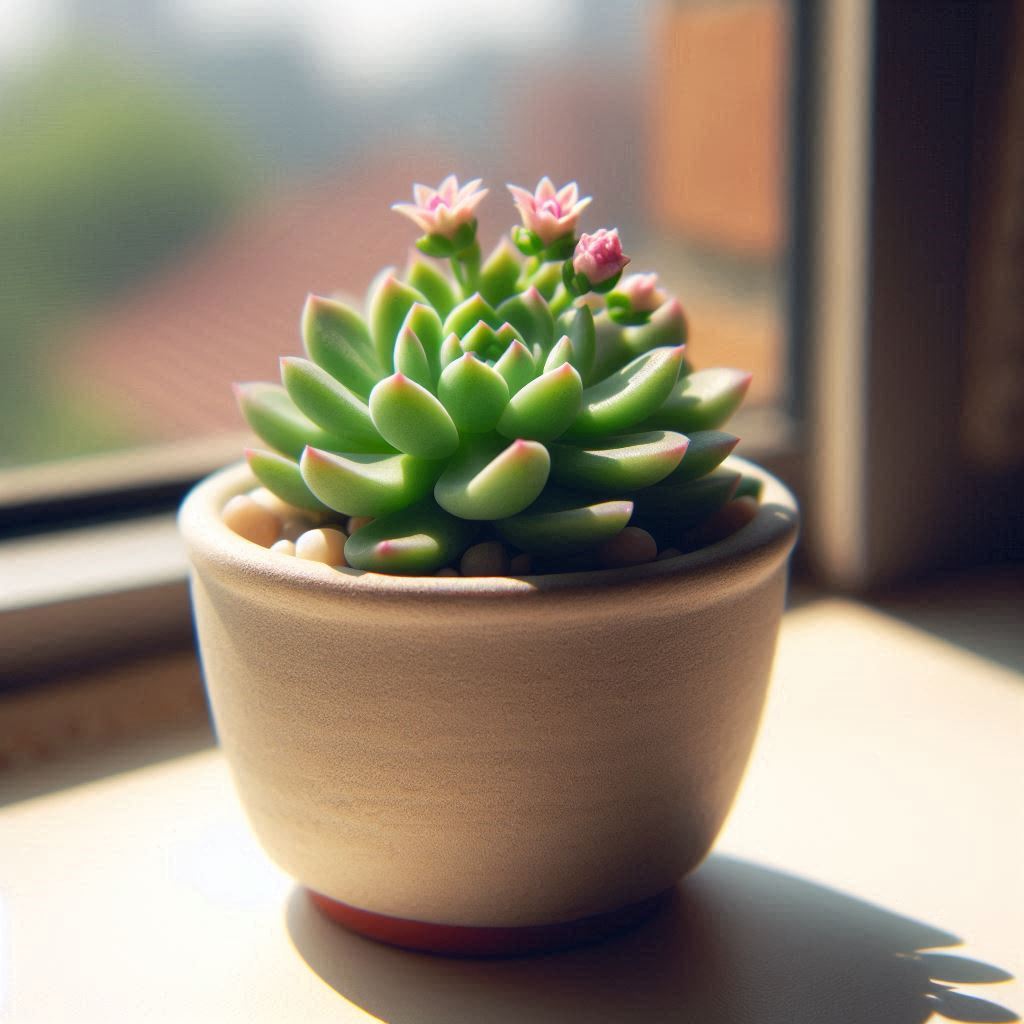
Benefits of Growing Succulents
Growing succulents offers a range of advantages that make them a top choice for plant enthusiasts and novice gardeners alike. One of the primary benefits is their easy maintenance, as succulents require very little water and can thrive in conditions where many other plants would struggle. This makes them ideal for busy individuals or those who may not have the time or experience to care for more demanding plants. Their drought-tolerant nature means that even if you forget to water them for a while, succulents can still flourish, making them nearly foolproof for beginners.
Low Water Requirements and Minimal Care
Succulents are uniquely suited to environments where water is scarce. Their ability to store water in their leaves, stems, and roots means they can survive on infrequent watering schedules, often requiring water only once every few weeks. This makes them perfect for people living in dry climates or those who want to reduce their water usage. Additionally, succulents are generally resistant to pests and diseases, further reducing the need for intensive care. These characteristics make succulents one of the most sustainable plant choices for home and garden use.
Versatility for Any Space: Indoor and Outdoor
Succulents are incredibly versatile and can thrive in a variety of settings, both indoors and outdoors. For indoor spaces, they make excellent decorative plants due to their compact size and ability to grow in small containers. Whether placed on a windowsill, desk, or shelf, succulents add a touch of greenery that brightens up any room. Outdoors, succulents can be incorporated into landscapes, rock gardens, or used as ground cover. Their ability to withstand direct sunlight and heat makes them an excellent option for sunny patios or arid garden beds.
Aesthetic Appeal and Air-Purifying Qualities
In addition to being low-maintenance, succulents are known for their striking appearance. Their geometric shapes, vibrant colors, and unique textures make them a favorite for plant collectors and decorators alike. From the rosette-shaped Echeveria to the spiky leaves of Aloe Vera, succulents offer a wide range of visual appeal. Furthermore, succulents have been shown to improve air quality by removing toxins and releasing oxygen. This air-purifying ability makes them a healthy and beautiful addition to any living space, promoting both physical and aesthetic well-being.
Choosing the Right Succulents for Your Home
When selecting succulents for your home, it’s important to consider a few key factors that will determine how well they thrive in your environment. The amount of light available, the space in which they will be placed, and the general climate of your area are all critical elements to keep in mind. Succulents are generally sun-loving plants, so if you’re growing them indoors, ensure they receive adequate sunlight through a bright window or supplementary light source. Additionally, if you’re limited on space, opting for smaller varieties like Haworthia can make a big difference. Climate is also essential, especially if you’re considering outdoor succulents, as some varieties are more frost-tolerant than others.
Best Indoor Succulents for Low-Maintenance
Indoor spaces can benefit greatly from smaller, compact succulents that don’t require constant attention. Some of the best options for indoor succulents include the Haworthia, which is known for its spiky, rosette-shaped leaves and ability to thrive in low light conditions. The Jade Plant (Crassula Ovata) is another popular choice, loved for its tree-like structure and minimal water needs. For those looking to add a touch of color indoors, the Zebra Plant (Haworthiopsis Attenuata) offers striking white stripes against dark green leaves, making it an eye-catching addition to any home decor. These plants not only require minimal care but also bring a unique aesthetic appeal to your living space.
Outdoor Succulents for a Low-Water Garden
If you’re considering adding succulents to your outdoor garden, there are plenty of options that can handle full sun and dry conditions. The Agave is a dramatic, large-scale succulent that thrives in hot, arid climates, making it perfect for desert or Mediterranean-style gardens. Sedum, commonly known as stonecrop, is another excellent choice for outdoor spaces. Its low-growing, creeping nature makes it ideal for ground cover or rock gardens. Additionally, Sempervivum (Hens and Chicks) is a frost-hardy succulent that can survive colder temperatures, making it suitable for various climates. These outdoor succulents require very little water and can add texture and interest to your garden year-round.
Final Recommendations for Succulent Selection
Ultimately, when choosing succulents for your home, it’s important to match the plant’s natural needs to your environment. Indoor spaces with low light will benefit from plants like Haworthia, while bright, sunny windows are perfect for Jade Plants. If you have an outdoor garden, opt for hardy species like Agave or Sedum, which can withstand both heat and drought. By selecting the right succulents for your space and climate, you’ll ensure that your plants not only survive but thrive, bringing long-lasting beauty to your home or garden.
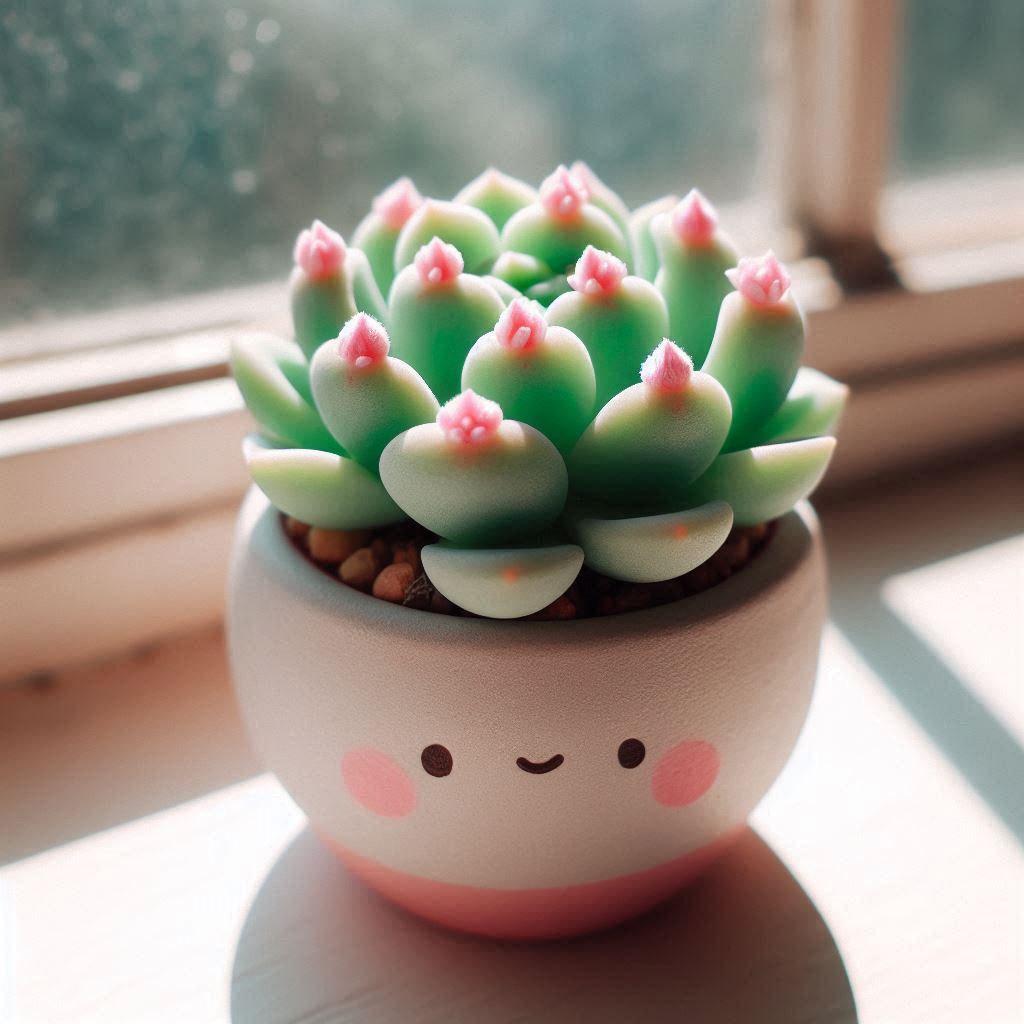
How to Care for Succulents
Caring for succulents is relatively simple, but getting it right involves paying close attention to their unique needs. These low-maintenance plants are hardy and adaptable, but they do require the right balance of light, water, and soil to truly thrive. With the proper care, your succulents can grow healthy and vibrant, whether you’re keeping them indoors or outdoors. Let’s break down the key areas of succulent care, including light requirements, watering practices, and potting choices.
Light Requirements for Succulents
Succulents are sun-loving plants, and light plays a critical role in their health. Most succulents need at least six hours of direct sunlight each day to maintain their bright colors and firm, fleshy leaves. For indoor succulents, placing them near a south-facing window is ideal. If direct sunlight isn’t possible, consider rotating the plants regularly to ensure even exposure, or supplementing with grow lights to meet their needs. Some varieties, like Haworthia or Aloe Vera, can tolerate low light, but generally, brighter light conditions yield healthier and more vibrant succulents.
Watering Succulents: Frequency and Best Practices
One of the most common mistakes when caring for succulents is overwatering. Since succulents are designed to store water in their leaves, stems, and roots, they don’t need frequent watering. A good rule of thumb is to water your succulents when the soil is completely dry.
Depending on your climate and the plant’s location, this might mean watering once every two weeks or even less frequently. Always check the soil moisture before watering, as overwatered succulents will show signs like mushy, discolored leaves. When you do water, soak the soil thoroughly, but make sure there’s no standing water left in the pot, as succulents are highly susceptible to root rot.
Soil and Potting for Succulents
Proper soil and potting are essential for the health of your succulents. Succulents need a well-draining soil mix to prevent water retention, which can lead to root rot. A specially formulated cactus or succulent mix is ideal, as these soils are designed to drain quickly. If you’re using regular potting soil, consider adding sand or perlite to improve drainage. Equally important is choosing the right pot. Pots with drainage holes are a must, as they allow excess water to escape, preventing the roots from sitting in water. Materials like terracotta are excellent for succulents because they absorb excess moisture and allow the soil to dry more evenly.
Choosing the Right Pots for Succulents
When selecting a pot for your succulents, look for materials that promote airflow and drainage. Terracotta pots are popular for this reason, as they naturally wick away moisture from the soil, keeping the roots from becoming waterlogged. Pots made of ceramic or plastic can work too, but make sure they have drainage holes at the bottom.
Additionally, consider the size of the pot—succulents generally prefer being slightly root-bound, so avoid overly large containers. This helps the soil dry out more efficiently and prevents the risk of overwatering, ensuring your succulents stay healthy and vibrant.
Fertilizing Succulents
Fertilizing succulents is an important aspect of their care that can greatly enhance their growth and overall health. Although succulents are generally low-maintenance plants, providing them with the right nutrients can help them thrive. Typically, it’s best to fertilize succulents during their growing season, which is usually in the spring and summer months. A diluted fertilizer should be applied every four to six weeks to ensure the plants receive the necessary nutrients without overwhelming them.
Recommended Fertilizers for Succulents
When selecting fertilizers for your succulents, look for those specifically formulated for cacti and succulents. These fertilizers are usually lower in nitrogen and higher in phosphorus and potassium, which are essential for promoting flowering and root development. Liquid fertilizers, like a balanced 10-10-10 or a 5-10-10 ratio, can be effective. Alternatively, you can use slow-release fertilizers that gradually provide nutrients over time, reducing the need for frequent applications. Always follow the instructions on the package to avoid over-fertilizing, as this can lead to salt buildup and damage your plants.
Common Problems and How to Fix Them
Even with the best care, succulents can encounter problems. One of the most common issues is overwatering, which can lead to root rot. Signs of overwatering include yellowing leaves, mushy stems, and a general wilting appearance. To prevent this issue, always allow the soil to dry out completely between waterings. If you notice signs of root rot, the first step is to remove the plant from its pot and inspect the roots. Trim away any black or mushy roots with clean scissors and repot the succulent in fresh, well-draining soil.
Dealing with Pests on Succulents
Pests can also pose a threat to the health of your succulents. Common pests include mealybugs and aphids, which can cause damage by sucking the sap from the leaves. Regularly inspecting your plants for signs of pests is essential for early detection. If you find pests, treat them with natural remedies such as a mixture of water and mild soap or neem oil.
To prevent infestations, keep your succulents in a well-ventilated area and avoid overcrowding plants, which can create a hospitable environment for pests. Regular cleaning of the leaves can also help reduce the risk of pest issues, ensuring your succulents remain healthy and vibrant.
Sunburn and Light Issues
Succulents are generally resilient plants, but they can suffer from light-related problems, particularly sunburn. Sunburn typically manifests as brown or crispy patches on the leaves, especially if the succulent has been exposed to intense, direct sunlight for extended periods.
To treat sunburn, it’s essential to immediately move the affected plant to a location with indirect sunlight. Gradually acclimate the succulent to brighter light conditions to prevent future sunburn. Additionally, ensuring proper light exposure not only helps prevent sunburn but also promotes healthy growth and vibrant colors.
Adjusting Light Conditions for Healthier Growth
Creating the right light environment for your succulents is crucial for their overall health. Different varieties of succulents have varying light requirements; some thrive in full sun, while others prefer partial shade. Assessing your specific succulents’ needs is essential to help them flourish. If you notice that your succulent is stretching or becoming leggy, it’s likely not receiving enough light. In contrast, yellowing leaves may indicate too much sunlight. By adjusting the light conditions—either by relocating the plant or using sheer curtains to filter sunlight—you can encourage healthier growth and maintain the striking appearance of your succulents.
Propagating Succulents
Propagating succulents is a rewarding way to expand your plant collection and share these beautiful plants with others. There are several methods for propagation, including leaf, stem, and offset propagation. Leaf propagation involves detaching a healthy leaf from the parent plant and allowing it to callus before placing it on well-draining soil.
Stem propagation requires cutting a healthy stem and letting it dry out for a few days before planting it in soil. Offset propagation, common in plants like Echeveria or Aloe Vera, involves removing the small pups that grow at the base of the parent plant.
Step-by-Step Guide on How to Propagate Succulents at Home
To successfully propagate succulents at home, start by selecting a healthy parent plant and the appropriate method for your chosen variety. For leaf propagation, gently twist off a leaf, making sure to keep the base intact. Allow the leaf to callus for about three days before placing it on top of a succulent soil mix. Lightly mist the soil, ensuring it remains slightly moist but not soggy.
For stem propagation, cut a healthy stem at a 45-degree angle and allow it to callus for a few days before planting it in well-draining soil. Lastly, when propagating offsets, carefully separate the pups from the main plant and plant them directly into the soil. With patience and the right conditions, your succulent cuttings will root and grow into beautiful new plants, enhancing your indoor or outdoor space.
Best Succulents for Beginners
When starting your succulent journey, it’s essential to choose the right varieties that are easy to care for and thrive with minimal effort. Some of the best succulents for beginners include Echeveria, Aloe Vera, and Jade Plant. Echeveria, known for its rosette shape and vibrant colors, can adapt well to various light conditions and requires infrequent watering. Aloe Vera is not only a beautiful succulent but also offers medicinal properties, making it a practical choice for new plant owners. Similarly, the Jade Plant, with its thick, oval leaves, symbolizes good luck and prosperity, thriving in indirect sunlight with minimal watering.
Why These Succulents Are Ideal for New Plant Owners
These selected succulents are ideal for novice gardeners due to their low-maintenance nature and resilience. For example, Echeveria can tolerate some neglect, which is perfect for those who may forget to water regularly. Aloe Vera can thrive in less-than-ideal conditions, making it forgiving for beginners who are still learning the ins and outs of succulent care. The Jade Plant is also a popular choice as it can grow well indoors and has a reputation for being hardy, requiring only basic care. Overall, these succulents provide an excellent starting point for anyone looking to explore the world of indoor gardening.
Conclusion
In conclusion, understanding the fundamentals of succulent care is crucial for any aspiring gardener. From selecting the right varieties to recognizing the signs of distress, this guide offers all the essential tips to ensure your succulents flourish. Remember, starting with easy-to-care-for options like Echeveria, Aloe Vera, and Jade Plant can lead to a rewarding gardening experience.
Join the Succulent Community!
We encourage you to embark on your succulent journey with confidence, armed with the knowledge shared here. Share your favorite succulents or any care tips you have in the comments below! Engaging with fellow succulent enthusiasts can enhance your experience and provide valuable insights as you grow your plant collection. Happy gardening!
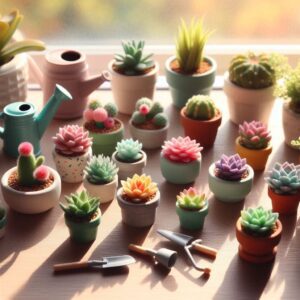
The Ultimate Guide to Growing Succulents Indoors
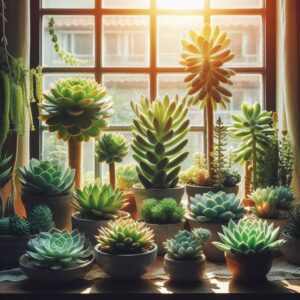
Tall Succulent Plants to Decorate and Transform Your Spaces
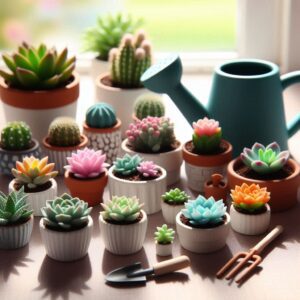
The Ultimate Guide to Mini Succulent Pots: Stylish, Compact, and Easy to Care For

The Best Low Light Succulents for Your Home

The Best Large Low Light Indoor Plants for Your Home

The Best Large Indoor Plants for Dark Rooms
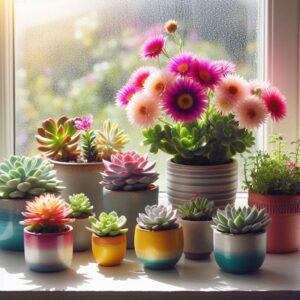
The Ultimate Guide to Flowering Succulent Plants
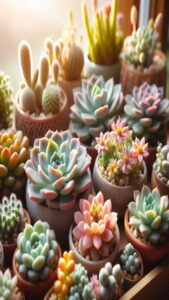
Cacti That Thrive in Shade and How to Care for Them
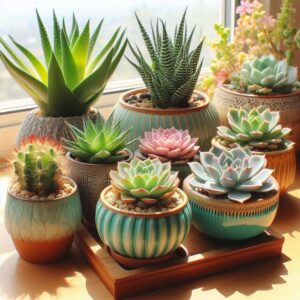
The Ultimate Guide to Good Succulents





